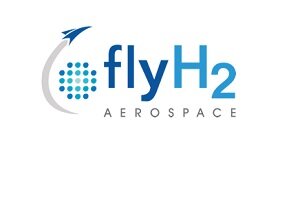
Cape Town-based FlyH2 Aerospace, which provides aero-technological solutions for pipeline security, border patrol and wildlife protection, is seeking investors to fund further developments.
Speaking to HumanIPO, Mark van Wyk, chief executive officer (CEO) of FlyH2 Aerospace, said: “We’re at the moment looking for investors to fund our developments. We’ve been working hard with HySA and Skeg to finalise aeronautics, theoretical designs, and performance specifications.”
He said: “We’re now ready to start manufacturing. We’re in the process of applying to TIA (Technology Innovation Agency) for initial funding and the IDC (Industrial Development Corporation) for later product development to market.”
Van Wyk, a software developer by trade, considers himself to be a “100 per cent” self taught entrepreneur and has been designing, building and flying radio controlled gliders until he began building aircraft for a South African manufacturer.
His designs, the small aircraft units also known as unmanned aerial vehicles (UAVs) or drones, will be used for search and rescue operations, border patrol, rhino and marine protection, police work, and geographic information systems (GIS).
“The aircraft will be 100 per cent autonomously flown via an onboard flight computer. The little aircraft will have a 200 kilometre straight range from node-to-node (ground control station to aircraft) or up to 10,000 kilometres range when using a relay network,” said van Wyk.
“A relay network allows multiple relay stations to be set up along a pipeline or border. This makes the little aircraft perfect for pipeline security operations, and border patrol. We’re setting up a meeting with retired general Johan Jooste [who is] offering to provide free UAVs (unmanned aerial vehicles or drones) to SANParks (South African National Parks) to protect the border between Mozambique and the Kruger National Park.”
Seventy per cent of South Africa’s rhinos have been killed in this area, thus the need for patrolling UAVs. The UAVs will be equipped with a vibration dampened full high definition camera.
Van Wyk said this operation will be funded with money received from either Kickstarter or Indiegogo together with assistance from FlyH2 Aerospace’s holding company, Quirk.
“We’re looking to install a traffic collision avoidance system (TCAS) and transponder, [which] put a blip on the air traffic control radar, in a later phase to make them completely safe to commercial aircraft – a big issue with why legislation allowing the operation of UAV’s is such a hassle,” he said.
The UAVs are powered by hydrogen fuel cell technology. Unlike many startups, which are faced with capital and skill shortages, FlyH2 Aerospace’s challenge was aversion to the hydrogen because people often associate hydrogen with atomic bombs, such as the Hindenberg disaster involving the Graf Zeppelin airship.
“When I tell people the aircraft is hydrogen powered, the first thing they ask is: ‘what if it blows up?’ The truth is that hydrogen technology has come a long way. The composite tanks are a lot stronger and more protected than the Zeppelin’s and the fuel cell process is very different from the process used to split the atom in hydrogen bombs,” he said.
“Although we see growing trends in companies looking to hydrogen as the future aerospace technology, it’s been difficult to convince investors. We’re confident that in a few years time, most electric UAVs will be powered by fuel cell technology.”
Van Wyk said he aims to promote UAV technology in South Africa as well as throughout Africa. He also wants to promote it on a global scale for commercial and positive causes.













